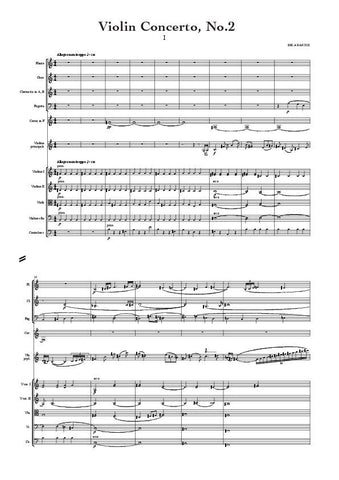Pleyel, Ignaz: Sinfonia Concertante in A major (Benton 114) (AE259) – sheet music
Previous Product Next Product
Description |
Pleyel, Ignaz (1757-1831)
|
||||||||||||||||
Audio sample |
|||||||||||||||||
Details |
The Sinfonia Concertante in A for 2 Violins was composed in 1792 and, like the 'celebrated' Concertante in F (Benton 113), received its premiere at one of the Professional Concerts. The Oracle and Morning Herald both carried notices that 'The fifth Professional Concert of 12 March 1792 included a New Concertante M.S. for two Violins, by Messrs. CRAMER - PLEYEL'. The review published in the Oracle the following day (13 March) reported that: ' PLEYEL had written a Concertante for two Violins, to usher into public the young CRAMER, who sustained with great skill the responsive part to his Father, and often when his timidity subsided, evinced his hereditary value. The second movement was highly applauded and had abundant merit '. A large number of prints survives for this work and as Pleyel himself issued the work on several occasions both in its original 2 violin scoring and also in an arrangement for pianoforte and violin, both versions can be considered authentic. In keeping with many other Pleyel compositions Benton 114 was also issued in a variety of other guises including duo for pianoforte and violin and pianoforte solo. This edition is based on a copy of the Andr second edition of 1805 preserved in the library of the Paris Conservatoire under the shelfmark L.437. The title page reads: SINFONIE / concertante / POUR DEUX / Violons principaux / accompagns / de deux Violons, Alto, Basse, deux Haut-bois, / deux Cors et deux Bassons, / COMPOSE PAR / Ignace Pleyel. / Oeuvre 57 Prix fl. 2.45 Xr.- / Seconde dition. / A OFFENBACH s/M, / chez Jean Andr. / No. 2075 The Andr print - which uses plates from 2074 (Andr's edition of the work in its Pianoforte & Violin version) and 2075 - is for the most part accurately engraved although there are inevitably a number of errors and inconsistencies. The notation of articulation and dynamic markings has been standardised throughout, and, where missing, markings have been reconstructed from parallel passages. These are indicated by the use of dotted slurs or brackets where appropriate. Like most eighteenth-century sources, the print is inconsistent at times in its notation of appoggiature ; these have also been standardised to minimise confusion. Obvious wrong notes have been silently corrected; otherwise, any editorial emendation with no authority from the source is placed within brackets. Allan Badley |
||||||||||||||||
Score Preview (best viewed in full screen mode) |
|||||||||||||||||














